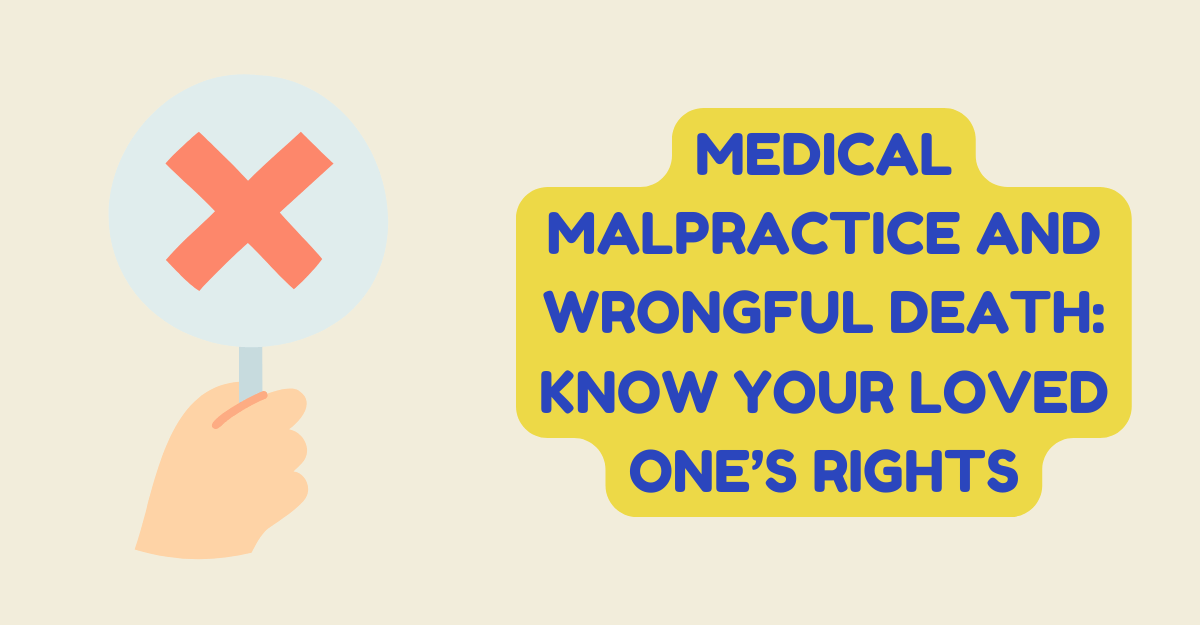
Medical Malpractice and Wrongful Death: Know Your Loved One’s Rights
The loss of a loved one is an unbearable experience, particularly when it is due to a preventable mistake in a medical setting. When negligence or a breach of duty by healthcare professionals leads to death, the surviving family members may have the right to seek justice through a wrongful death claim. Understanding the intersection of medical malpractice and wrongful death, as well as the rights of the deceased’s loved ones, is essential during such a difficult time.
What is Medical Malpractice?
Medical malpractice occurs when a healthcare provider deviates from the standard of care that is expected in their profession, resulting in harm to the patient. Examples include surgical errors, misdiagnosis or failure to diagnose, improper medication or dosages, and poor post-operative care. When these errors result in death, it is not only a medical tragedy but also a legal issue.
Steps to Take in a Medical Malpractice Wrongful Death Case
The unexpected loss of a loved one can lead to one of the most challenging times in a person’s life. When the death arises from a medical error or oversight, the situation can become even more distressing due to the complexities of medical malpractice law. If you find yourself in this heartbreaking situation, knowing the steps to take can guide you through the process and help ensure justice is served for your loved one. Here’s what you need to do:
- Obtain Medical Records: Request all relevant medical documentation, including hospital records and doctor’s notes, to establish a timeline of care.
- Consult with an Attorney: Seek guidance from a specialized wrongful death lawyer to navigate the legal complexities in medical malpractice cases and protect your rights.
- Investigate: Work with medical experts to assess if negligence contributed to the death, forming the basis of your case.
- Identify Liable Parties: Determine all potentially responsible parties, such as healthcare professionals or institutions involved in the care.
- Understand Time Limits: Be aware of the statute of limitations for filing claims, considering factors like the discovery rule, which may extend deadlines.
- Assess Damages: Calculate both economic losses (medical expenses, lost wages) and non-economic damages (pain and suffering) relevant to the case.
- File Lawsuit: Formalize your claim by submitting a complaint outlining the legal basis and requesting damages to the court.
- Discovery Phase: Engage in information exchange and depositions to gather evidence and strengthen your case.
- Negotiate Settlement: Explore settlement options with the defense, aiming for fair compensation, and retaining final decision-making authority.
- Trial: If necessary, proceed to trial, where evidence will be presented before a judge or jury for a verdict.
What Constitutes a Wrongful Death Claim?
Wrongful death claims arise when an individual dies as a result of another party’s legal negligence. In the context of healthcare, if it can be proven that a medical error directly caused the patient’s death, the deceased’s family members may have grounds for a wrongful death lawsuit. This legal action seeks compensation for the survivors’ loss, such as lost wages from the deceased, lost companionship, and funeral expenses.
Who Can File a Wrongful Death Claim?
The specifics can vary by state, but generally, the following parties can file a wrongful death lawsuit in the case of medical malpractice:
- Spouses
- Children, including adopted children and, in some states, stepchildren
- Parents of unmarried children
- The estate of the deceased, which can benefit next of kin and other dependents
Essential Elements to Prove in a Medical Malpractice Wrongful Death Case
Four key elements of negligence must be proven in a wrongful death case resulting from medical malpractice:
- Duty of Care: There was a doctor-patient relationship that established a duty of care.
- Breach of Duty: The healthcare provider breached that duty of care by acting negligently or failing to act.
- Causation: The breach of duty was the direct cause of the patient’s death.
- Damages: The death resulted in measurable damages to the family or estate.
Seek Justice for Your Loved One
The intersection of medical malpractice and wrongful death is a profoundly complex area that often involves intricate legal and medical considerations. Ensuring that loved ones are aware of their rights is an essential first step towards seeking accountability. Rather than navigating this challenging process alone, having the guidance of an experienced attorney can be invaluable for families seeking to understand their options and gain some measure of solace through the pursuit of justice.






